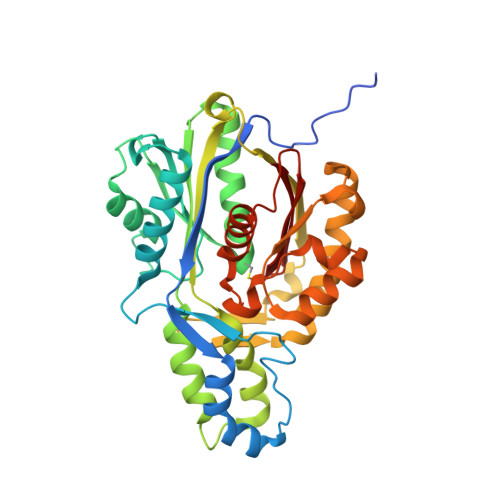The role of OleA His285 in orchestration of long-chain acyl-coenzyme A substrates.
Jensen, M.R., Goblirsch, B.R., Esler, M.A., Christenson, J.K., Mohamed, F.A., Wackett, L.P., Wilmot, C.M.(2018) FEBS Lett 592: 987-998
- PubMed: 29430657
- DOI: https://doi.org/10.1002/1873-3468.13004
- Primary Citation of Related Structures:
6B2R, 6B2S, 6B2T - PubMed Abstract:
Renewable production of hydrocarbons is being pursued as a petroleum-independent source of commodity chemicals and replacement for biofuels. The bacterial biosynthesis of long-chain olefins represents one such platform. The process is initiated by OleA catalyzing the condensation of two fatty acyl-coenzyme A substrates to form a ¦Â-keto acid. Here, the mechanistic role of the conserved His285 is investigated through mutagenesis, activity assays, and X-ray crystallography. Our data demonstrate that His285 is required for product formation, influences the thiolase nucleophile Cys143 and the acyl-enzyme intermediate before and after transesterification, and orchestrates substrate coordination as a defining component of an oxyanion hole. As a consequence, His285 plays a key role in enabling a mechanistic strategy in OleA that is distinct from other thiolases.
Organizational Affiliation:
Department of Biochemistry, Molecular Biology, and Biophysics, University of Minnesota, St Paul, MN, USA.

















